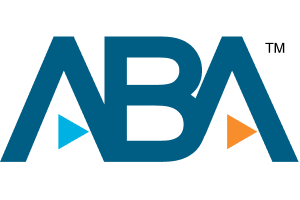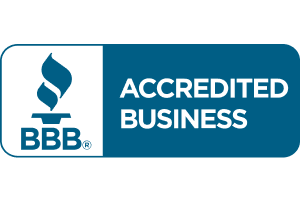Florida Homeowners and Investors Bracing for Next Huge Wave of Mortgage Foreclosures
Over $200 Billion in home equity lines of credit (second mortgages also known as HELOC’s) will be “celebrating” their ten-year anniversary over the next 4 years. This represents approximately 40% of all outstanding HELOC loans.
These loans are problematic because most of them will require the borrowers to start paying down the principal on the loans as well as the interest they had been paying all along. This may result in a typical mortgage payment doubling or tripling. For example, a consumer with a $30,000 home equity line of credit and an initial interest rate of 3.25% would see their required payment jumping to $293 from $81, according to Fitch Ratings analysts. To make matters worse, most industry analysts and pundits agree that mortgage interest rates are scheduled to rise over the next several years. Some home equity lines even require repayment of the loan in full in the form of a balloon payment.
The number of borrowers missing payments around the 10-year point can double in their eleventh year, data from consumer credit agency Equifax shows. When HELOC’s go into default, this typically results in a huge loss to the bank of up to 90% because a home equity line of credit is usually the second mortgage behind a significant first mortgage. If the bank forecloses, most (or all) of foreclosure sale proceeds go to the first mortgage lender.
HOMEOWNERS USED HELOC’S MUCH LIKE ATMS
From 2003-2007, home owners and investors utilized home equity lines of credit to pull money out of their homes much like ATM cards or low interest credit cards. The major banks catered to the consumers by marketing these financial instruments heavily. Major banks JP Morgan Chase, Wells Fargo, Citigroup Incorporated and Bank of America EACH have over $10 Billion of these home equity lines of credit on their books for totaling over $50 Billion, and in some cases much more than that.
How bad this next wave of foreclosures is will be determined by how many HELOC loans default, which is a matter for debate. However, if banks refuse to extend the term of the loans that become due, the average consumer is not in a position to pay a balloon payment in excess of $50,000 – $100,000.
Between the end of 2003 and the end of 2007, outstanding debt on banks’ home equity lines of credit jumped by 77 percent, to $611 billion from $346 billion, according to data provided by FDIC, and while not every loan requires borrowers to start repaying principal after ten years, most do. These loans were attractive to banks during the housing boom, in part because lenders thought they could rely on the collateral value of the home to keep rising.
This scenario will be increasingly common in the coming years: in 2014, borrowers on $29 billion of these loans at the biggest banks will see their monthly payment jump, followed by $53 billion in 2015, $66 billion in 2016, and $73 billion in 2017.
A large percentage of HELOC’s were given to borrowers with poor credit. For comparison purposes, only 12% of home equity borrowers had credit scores below 660 in 2001. These types of borrowers are classified as “subprime.” This figure jumped 25% to more than 16% in 2006.
At Bank of America, around $8 billion in outstanding HELOC balances will reset before 2015 and another $57 billion will reset afterwards but it remains unclear which year or years will have the highest number of resets. J.P. Morgan Chase has stated that over $9 billion in home equity lines of credit will reset before 2015 and after 2017 and another $22 billion will reset in the intervening years. Bank of America said that 9% of its outstanding HELOC’s that have reset were not performing. That kind of a figure would likely be manageable for big banks. But if home equity delinquencies rise to subprime-mortgage-like levels, it could spell trouble.
At Wells Fargo, $4.5 billion of home equity balances will reset in 2014 and another $25.9 billion will reset between 2015 and 2017. At Citigroup, $1.3 billion in home equity lines of credit will reset in 2014 and another $14.8 billion will reset between 2015 and 2017.
HELOC FORECLOSURE CASES MORE DIFFICULT TO DEFEND
A foreclosure case involving a home equity line of credit may be more difficult to defend than a traditional foreclosure of a standard uniform residential mortgage. In most HELOC loans, there is usually a Borrower Agreement instead of a traditional Note. In addition, the Mortgage does not have as many pages including “Built-in defenses.” Most notably, most HELOC mortgages do not require the lender send a Notice of Default and opportunity to cure prior to commencing a foreclosure case.
In a standard uniform mortgage, Paragraph 22 of the Mortgage requires that the lender provide a very specific notice with very specific language notifying the borrower of their rights and opportunity to cure the default prior to the acceleration of the mortgage and the commencement of the foreclosure proceeding. The bank must prove that they satisfied this “condition precedent” in the foreclosure case prior to obtaining a final judgment of foreclosure. Often times, the letter is not sent, the language in the letter is improper, the letter is not sent timely or the letter does not provide adequate time to cure.
CONSULT A KNOWLEDGEABLE FORECLOSURE LITIGATION ATTORNEY
While it may be more difficult to defend a mortgage foreclosure action involving a second mortgage or home equity line of credit (HELOC), Borrowers should definitely retain the services of a knowledgeable and experienced foreclosure litigation attorney. As the Borrower, you still have the right to defend / litigate the action making the bank prove their case. While there aren’t as many defenses that can be raised, there are still available defenses that can be utilized. The foreclosure of a second mortgage can actually be an opportunity to create equity in your property. For example, if you have a $300,000 first mortgage and a $100,000 second mortgage or home equity line of credit (HELOC) and the property is worth $400,000 (or the same as the first and second mortgage), it is possible to negotiate a reduced payoff with the HELOC to actually create equity in the property. This reduced payoff can be in a lump sum or via a payment plan. In addition, these payments will not start until you are ready to finalize the settlement.
The attorneys and staff at the Neustein Law Group, PA have been defending foreclosures longer than most any other firm in the state of Florida. Neustein Law Group, PA is a boutique commercial litigation firm headquartered in Aventura, FL in Miami-Dade County and has convenient satellite offices twenty minutes from wherever you are in Miami-Dade County, Fort Lauderdale in Broward County, Boca Raton and West Palm Beach in Palm Beach County and throughout the state of Florida. Their direct phone number is 305-531-2545 or (888)400-ATTY. Website is www.Stopforeclosurelawyer.com






